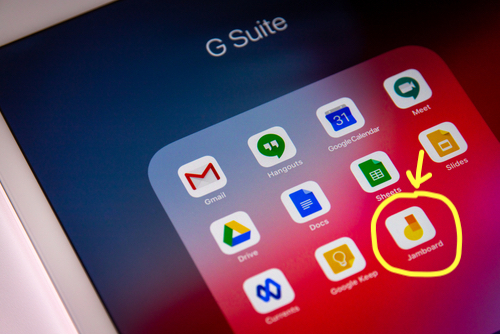
Here are three examples of how I’m using Google’s Jamboard to support teaching virtually. If you are familiar with my three phase plan for teaching reading at the transitional-fluent stages, you can use Jamboard in all three phases. These tips can be helpful for lessons during other parts of the day as well!
Introduce Vocabulary
(Phase 1 Meet the Source)
Below are two examples of Jamboard slides I’ve created to teach vocabulary. Notice that I include the definition, inserted images that students can use to try out using the word, and a language stem (if needed). (I do like doing this on PPT better because I can make the images and language stem “fly in” if needed.)
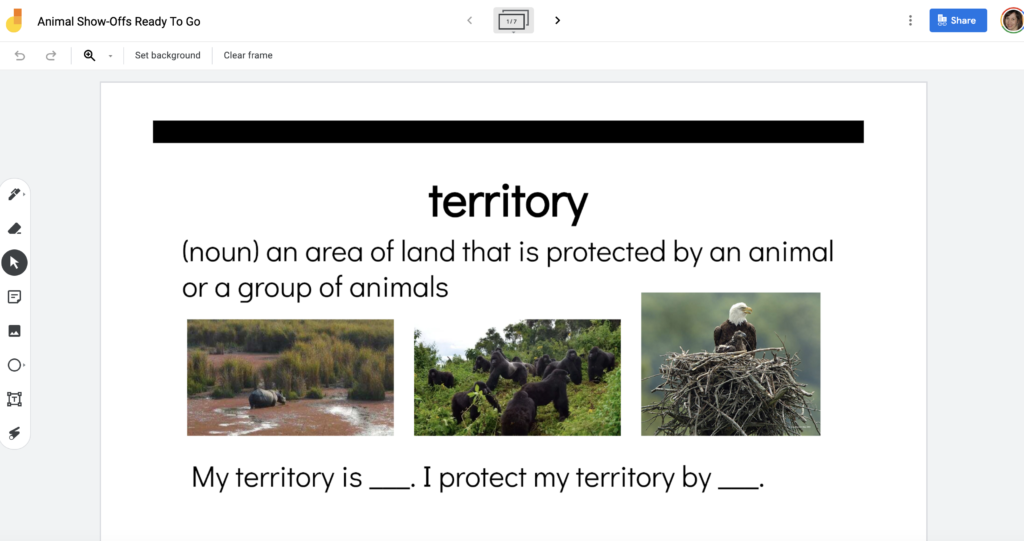

Annotate or Jot Notes
(Phase 2 Meet the Strategy)
For this lesson, the teacher used the Okapi digital book Animal Show-Offs. Because the district has permission to access these books, I believe it’s within “fair use” to screen shot a page and insert it into a Jamboard slide for close reading. We used the marker pen feature to underline key words. You can see how we did this in the image below. We used Jamboard’s sticky note feature to note the key words we identified during close reading. If your students have access to the Google Suite, you could invite them to this Jamboard and they could take some control over annotating and jotting key words. This shared experience might benefit them when they do this on their own.
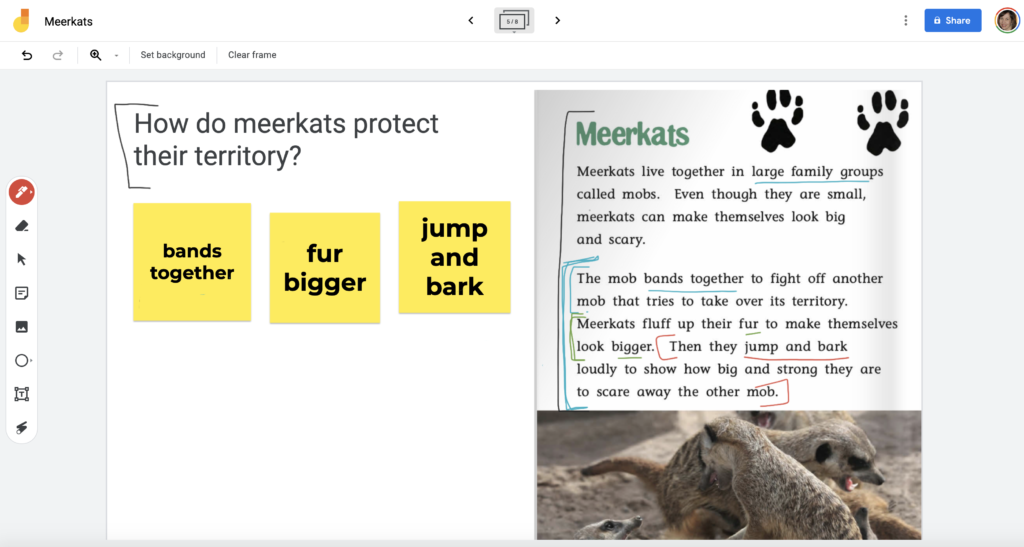
The image below is an example of how you can use Jamboard for the “explode to explain” strategy.
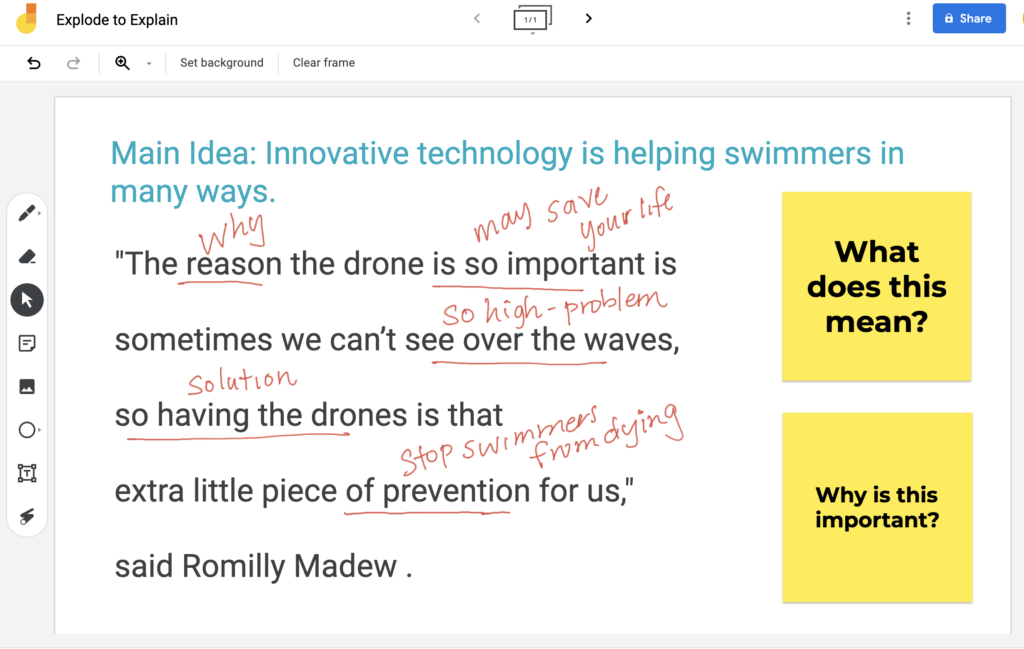
Shared Writing
(During Phase 3 Meet the Response)
The “sticky notes” with key words becomes the “plan for writing.” Students can copy this at the top of their own writing paper or they can just reference this as they write. (I usually ask them to copy so I can stop sharing the screen.) If you need to engage students in shared writing, Jamboard can be helpful with that too – as revealed in the image below.
Just a note – For this lesson, since we’d heavily scaffolded the process of determining what’s important, the students were asked to closely read another section (about the giraffe protecting its territory), jot key words, and then write.
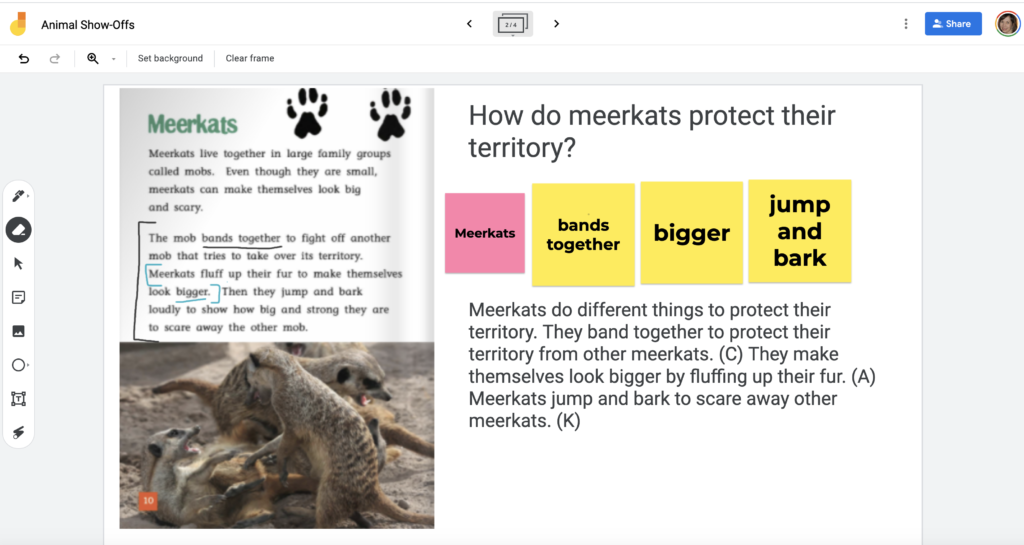
I organize Jamboards by source. So a Jamboard for a short guided reading text or book like Animal Show-Offs includes slides with vocabulary, the excerpt of text we will be close reading (after they’ve had a chance to read the whole text), and space to engage in shared writing. It seems like even when we are back to in-person teaching, this saved Jamboard will be useful again at some point.
Hope this helps! Would love to hear about other ways you are using Jamboard to support readers of nonfiction!
Sunday
